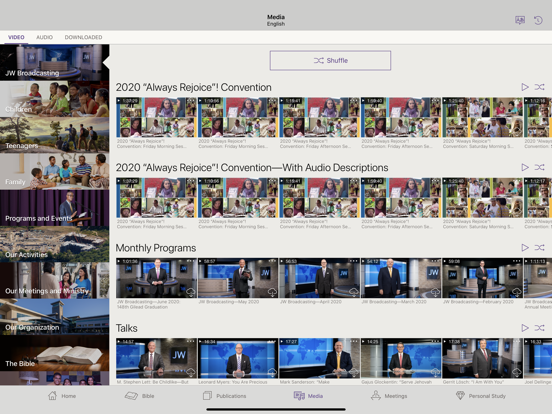

#What is add a tag in jw library app free
But in the app, you will of course be free to add official covers for your books.

It’s a win-win for everyone.Īnalytics adapters offer the ability to learn more about latency, revenues, bid rates, etc.
#What is add a tag in jw library app code
Each company maintains their own Prebid.js adapter to provide the freshest code for publishers, rather than a proprietary wrapper solution trying to reverse engineer another company’s adapter. This set of working header bidding integrations is part of what makes Prebid.js so special. There are currently over 300 bidder adapters. There are two types of adapters: bidder and analytics.īidder Adapters are supposed to represent the SSPs & Exchanges you want to work with. The Prebid.js Adapters plug into Prebid.js Core and are meant to be interchangeable depending on who the publisher wants to work with. We want Prebid.js Core to be fast, fair, and open because it represents the header bidding wrapper itself. Sending bid requests to the partners you want.

The Prebid.js Core is intended to be lightweight, while achieving all the foundation a good header bidding wrapper needs to provide, including: optional modules the publisher wants to utilize.the Adapters a publisher wants to work with.The Prebid.js library is composed of these pieces: If the ad server decides Prebid wins, the ad server returns a signal to Prebid.js telling the library to write the winning creative to the page.The ad server has line items targeting those bid parameters.Prebid.js passes information about those bids (including price) to the ad server’s tag on page, which passes it to the ad server as query string parameters.The ad server’s tag on page is paused, bound by a timer, while the Prebid.js library fetches bids and creatives from various SSPs & exchanges you want to work with.How Does Prebid.js Work?Īt a high level, header bidding with Prebid.js involves just a few steps: It supports currency conversion, GDPR, common ID systems, and multiple ad servers. This is another stellar cataloguing app that helps you compile an easily searchable list of books you own, It connects with Goodreads so you can check out reviews of titles you haven’t read yet or see how your opinions on books differ from that of your is a feature-rich header bidding platform for the web, including more than 300 demand sources and 50 analytics adapters. Note-taking and journaling features let you annotate your reading experience in myriad fun, interactive ways. While primarily an ereader, it allows you to organize both physical books and ebooks on shelves. Gerty is for readers who really miss taking literature classes in college. It’s free and has a 4.4 rating on the Google Play store. It allows users to input titles manually or search by IBSN or barcode and sort using a variety of metrics including author name. This app takes more of a bare-bones approach. If you’re generous enough to let any of your books out of sight, that is.Īvailable for iOS and Android. There’s even a feature that tracks titles you’ve lent out to friends. Part social media platform, part library-style catalog, the app sources book info from more than 4,967 libraries worldwide (plus Amazon). Library Thing is similar to Goodreads, but with a stronger focus on the cataloging aspect. Think of it as your cheat sheet for when you can’t remember what books you wanted to read while you’re browsing at Barnes and Noble. While not a cataloguing app in the traditional sense, Reco lets you keep track of recommendations from friends, and dole them out too.


 0 kommentar(er)
0 kommentar(er)
